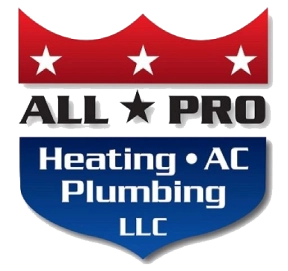
Have you ever turned on your furnace expecting a warm, cozy home, only to feel a rush of cold air instead? It’s frustrating, inconvenient, and can leave you wondering if something is seriously wrong with your heating system. In Mattoon, IL, where temperatures can swing from mild to chilly, having a reliable furnace is more than a comfort—it’s essential for your family’s safety and well-being. Understanding why your furnace might be blowing cold air and knowing what steps to take can help you restore warmth quickly and prevent further damage.
Furnaces are complex systems that rely on multiple components working together. A problem with just one part can result in cold air blowing through your vents. Fortunately, many of these issues can be identified and resolved with proper troubleshooting and professional guidance. In this blog, we’ll walk you through common causes of cold air from your furnace, how to diagnose them, and practical tips to fix or prevent them.
How Furnaces Work: A Quick Overview
Before diving into troubleshooting, it helps to understand the basics of how a furnace operates. Most homes in Mattoon, IL, use gas or electric furnaces, which work by heating air and distributing it through ducts to warm your living spaces. Here’s a simplified breakdown:
-
Thermostat signals the furnace: When your home’s temperature drops below your desired setting, the thermostat triggers the furnace to start.
-
Ignition or heating element activates: Gas furnaces use a burner and ignition system, while electric furnaces use heating elements.
-
Blower fan distributes warm air: The fan pushes the heated air through ducts and into your home.
-
Exhaust system vents gases: Gas furnaces release combustion gases through a vent or flue to maintain safety.
If any part of this process fails, the air coming out of your vents can remain cold, even if the blower is running normally.
Common Reasons Your Furnace Is Blowing Cold Air
Understanding the root cause is the first step to fixing your furnace. Here are the most frequent culprits:
1. Thermostat Issues
Sometimes the problem isn’t your furnace at all—it’s your thermostat. If the thermostat isn’t set correctly or is malfunctioning, it can send incorrect signals to the furnace.
Signs of a thermostat issue:
-
The furnace doesn’t turn on at all.
-
The furnace cycles on and off rapidly.
-
Inconsistent temperatures throughout the house.
Troubleshooting tips:
-
Check the thermostat settings. Make sure it’s set to “heat” and the temperature is above the current room temperature.
-
Replace the batteries if it’s a battery-powered thermostat.
-
Consider upgrading to a programmable or smart thermostat for more reliable temperature control.
2. Dirty or Clogged Air Filters
Air filters are designed to trap dust, dirt, and allergens, but over time, they can become clogged. A blocked filter restricts airflow, causing your furnace to overheat or fail to heat properly.
Signs of a clogged filter:
-
Reduced airflow from vents.
-
Furnace shuts off frequently.
-
Air feels cooler than expected.
Troubleshooting tips:
-
Inspect your air filter monthly.
-
Replace or clean the filter if it looks dirty or clogged.
-
Maintaining a clean filter can improve furnace efficiency by up to 15%, according to the U.S. Department of Energy.
3. Pilot Light or Ignition Problems
For gas furnaces, the pilot light or electronic ignition system ignites the gas to produce heat. If the pilot light goes out or the ignition fails, your furnace can run without producing warm air.
Signs of ignition issues:
-
The furnace blower runs, but no heat is produced.
-
Yellow or flickering flame in older pilot lights.
-
Furnace shuts down shortly after starting.
Troubleshooting tips:
-
Check your furnace’s pilot light if you have an older model.
-
For newer models with electronic ignition, listen for clicking sounds or check error codes if available.
-
Never attempt major gas repairs yourself; call a professional to safely inspect and repair ignition systems.
4. Tripped or Faulty Limit Switch
The limit switch monitors the temperature inside your furnace and turns the burner off if it overheats. A malfunctioning switch may cause the burner to shut down prematurely, resulting in cold air.
Signs of a faulty limit switch:
-
Furnace cycles on and off frequently.
-
Cold air blows after a short heating period.
-
Furnace makes unusual noises like buzzing or clicking.
Troubleshooting tips:
-
Turn off the furnace and let it cool.
-
Check for airflow restrictions (dirty filters or blocked vents).
-
If the issue persists, a technician can test and replace the limit switch.
5. Gas Supply Problems
Your furnace needs a steady supply of gas to operate. Any disruption in the gas line or gas valve can prevent your furnace from producing heat.
Signs of gas supply issues:
-
Furnace won’t ignite at all.
-
You smell gas near the furnace.
-
Pilot light won’t stay lit.
Troubleshooting tips:
-
If you smell gas, evacuate your home immediately and call your gas provider or emergency services.
-
Ensure the gas valve is fully open.
-
Only certified HVAC technicians should handle gas line or valve issues.
6. Blocked or Closed Vents
Sometimes, the solution is as simple as ensuring airflow isn’t restricted. Closed or blocked vents can reduce airflow and cause cold spots in your home.
Signs of blocked vents:
-
Certain rooms are colder than others.
-
Furnace seems to run longer than usual without heating the home adequately.
Troubleshooting tips:
-
Open all supply and return vents.
-
Remove furniture, rugs, or other obstructions from vents.
-
Consider duct cleaning if vents are heavily dusty or blocked.
7. Blower Motor Issues
The blower motor circulates air through your home. If it’s failing, your furnace may produce warm air but fail to distribute it effectively.
Signs of blower motor problems:
-
Weak airflow from vents.
-
Furnace makes unusual grinding or squealing noises.
-
Blower doesn’t turn on even when the furnace is running.
Troubleshooting tips:
-
Check the blower fan for dust and debris buildup.
-
Listen for unusual noises during operation.
-
Professional repair or replacement may be necessary for persistent blower motor issues.
8. Dirty or Malfunctioning Flame Sensor
The flame sensor ensures your furnace’s gas is burning correctly. If it’s dirty or faulty, the furnace may shut off the gas supply as a safety precaution, resulting in cold air.
Signs of a dirty flame sensor:
-
Furnace shuts off shortly after starting.
-
Intermittent heating.
-
Blower continues to run with no heat.
Troubleshooting tips:
-
Cleaning the flame sensor is a delicate task; it’s best done by a professional.
-
Regular furnace maintenance can prevent flame sensor issues from developing.
Step-by-Step Troubleshooting at Home
If your furnace is blowing cold air, there are a few basic steps you can take before calling a technician. These steps are safe and straightforward:
-
Check the thermostat settings
Make sure it’s set to “heat” and the temperature is higher than the current room temperature. -
Inspect the air filter
Replace or clean it if it looks dirty. This is often the simplest and most effective fix. -
Verify vents are open and unobstructed
Walk through your home and ensure all supply and return vents are fully open. -
Listen for unusual noises
Buzzing, grinding, or clicking sounds can indicate blower motor or limit switch issues. -
Check the pilot light or ignition
For older gas furnaces, ensure the pilot light is lit. For newer models, observe if the electronic ignition is clicking or cycling. -
Look for error codes
Some furnaces have LED lights or displays that flash error codes. Check your furnace manual for interpretation.
If these steps don’t restore heat, it’s time to contact a professional. Attempting complex repairs on gas furnaces or electrical components without experience can be dangerous.
Preventing Cold Air Issues
Regular maintenance is key to preventing your furnace from blowing cold air. Consider these tips for long-term reliability:
1. Schedule Annual Furnace Maintenance
Professional inspections and tune-ups can catch problems before they become serious. Technicians will:
-
Inspect and clean burners, flame sensors, and ignitions.
-
Test the limit switch and blower motor.
-
Check gas lines, vents, and airflow.
-
Adjust controls for optimal efficiency.
According to ENERGY STAR, regular maintenance can improve furnace efficiency by 5–15% and extend the system’s lifespan.
2. Replace Air Filters Regularly
Dirty filters are a leading cause of airflow issues. Replace filters at least every 1–3 months, or more frequently if you have pets or high dust levels.
3. Keep Vents and Ducts Clear
Ensure furniture or curtains aren’t blocking vents. Periodic duct cleaning can improve airflow and reduce dust buildup.
4. Monitor Thermostat Performance
A malfunctioning thermostat can cause inconsistent heating. Consider upgrading to a programmable thermostat for more precise temperature control.
5. Address Minor Problems Early
If you notice unusual noises, inconsistent temperatures, or short cycling, schedule a professional inspection promptly. Small issues are easier and less costly to fix than major breakdowns.
When to Call a Professional in Mattoon, IL
While some troubleshooting steps can be done safely at home, other issues require professional expertise. Contact All Pro Heating, AC, Plumbing if you experience:
-
Smell of gas near the furnace.
-
Repeated cycling on and off.
-
No heat despite a properly set thermostat.
-
Strange noises or smoke from the furnace.
-
Persistent cold spots in multiple rooms.
Certified technicians have the tools and experience to safely diagnose and repair gas and electric furnaces, ensuring your home stays warm and safe.
Benefits of Professional Furnace Service
Relying on professionals for furnace issues offers several advantages:
-
Safety: Gas furnaces involve flammable fuels, and faulty components can pose fire or carbon monoxide risks.
-
Efficiency: A properly serviced furnace uses less energy, reducing utility costs.
-
Reliability: Regular maintenance and timely repairs prevent unexpected breakdowns.
-
Longevity: Proper care can extend your furnace’s lifespan by several years.
-
Peace of mind: Knowing your furnace is safe and fully functional allows you to focus on comfort without worry.
In Mattoon, IL, where cold weather can arrive unexpectedly, having a reliable heating system is essential for comfort, health, and safety.
For Heating Services in Mattoon, IL, Contact All Pro Heating, AC, Plumbing Today
If your furnace is blowing cold air, don’t wait for the problem to worsen. The experienced team at All Pro Heating, AC, Plumbing is here to help homeowners in Mattoon, IL, diagnose, repair, and maintain furnaces safely and efficiently. With professional expertise, attention to detail, and a commitment to customer care, we ensure your home stays warm and comfortable no matter the weather. Contact us today to schedule a furnace inspection, repair, or maintenance service, and enjoy peace of mind knowing your heating system is in expert hands.






